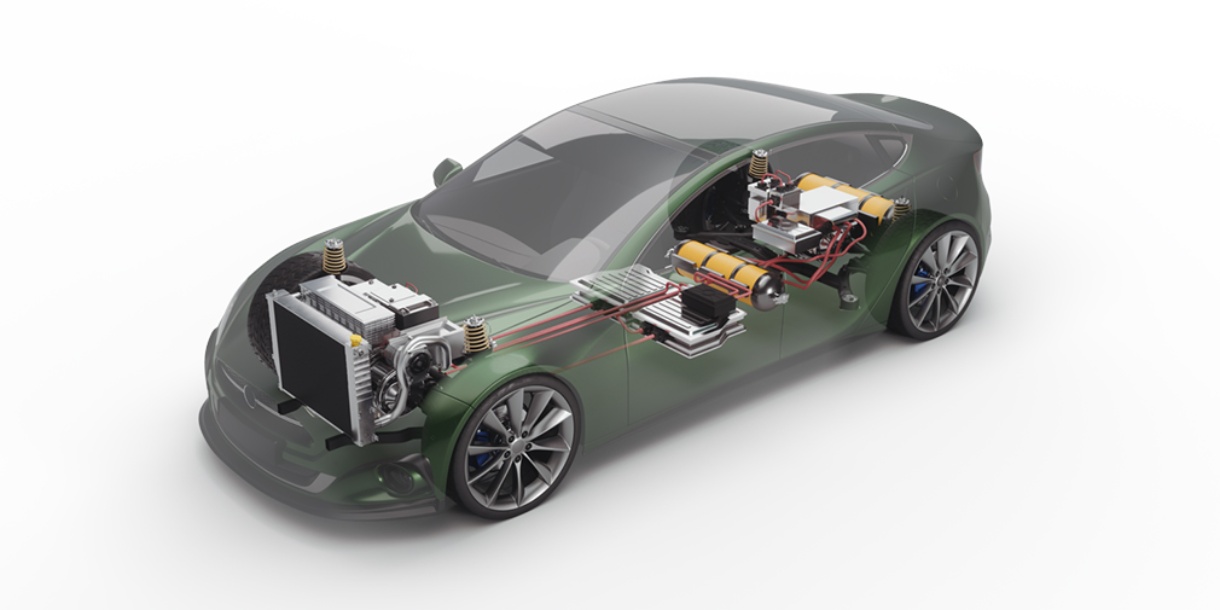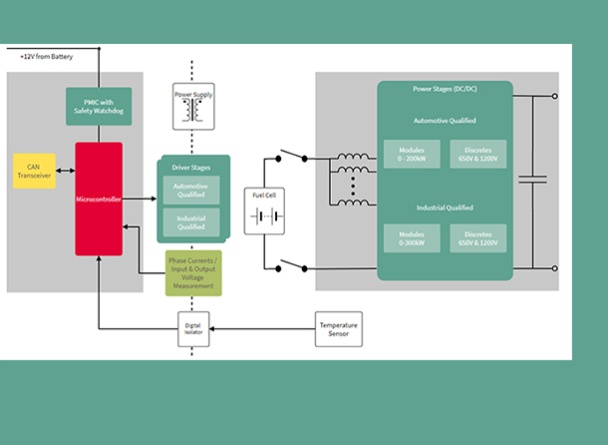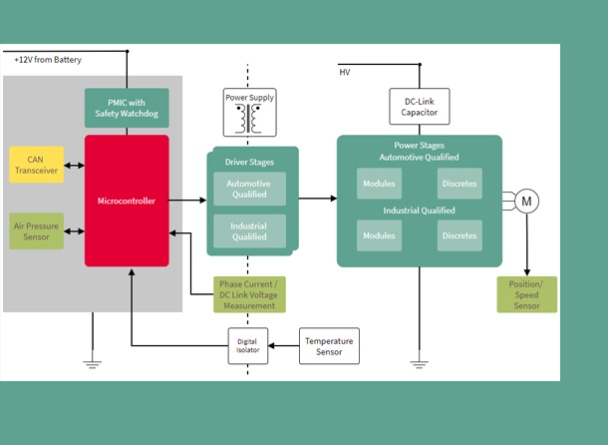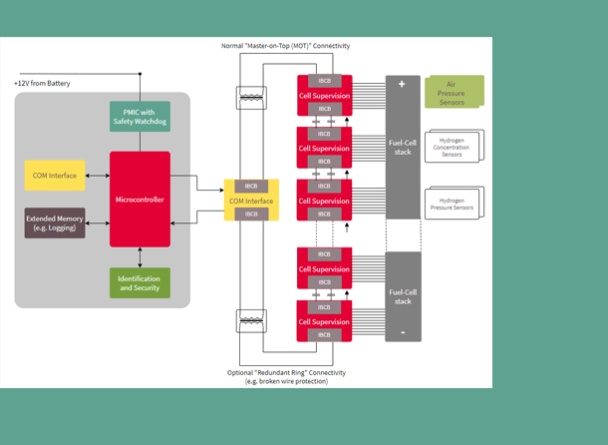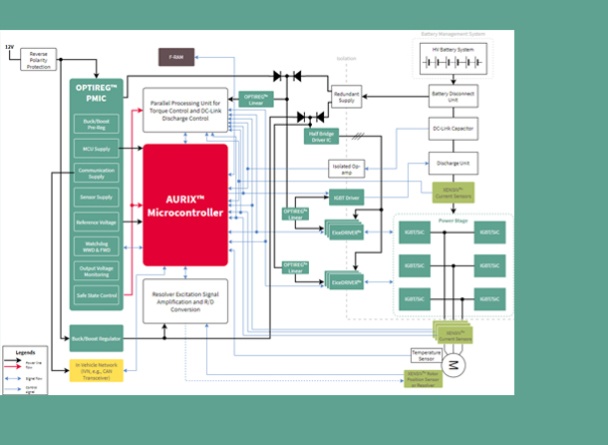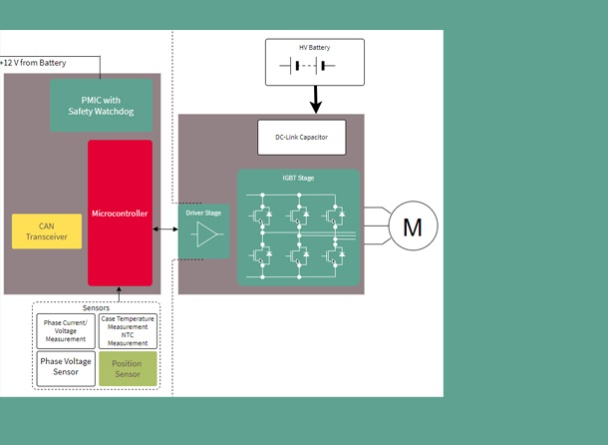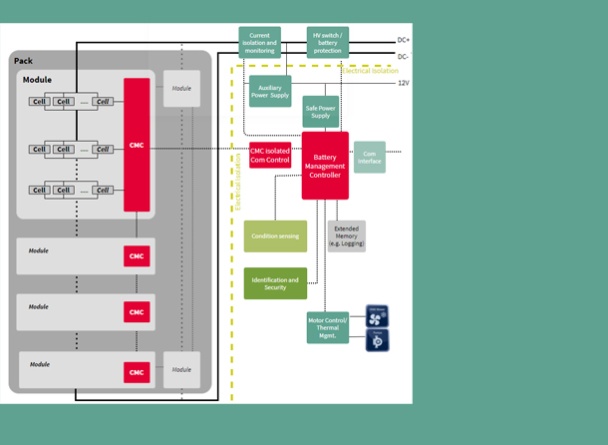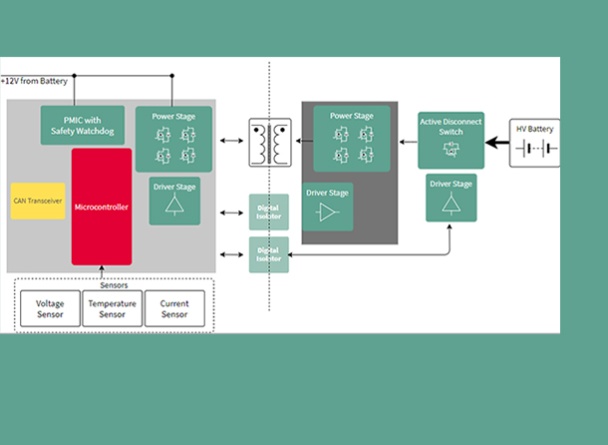FCEV powertrain system
Revolutionary fuel-cell electric vehicle (FCEV) technology for hydrogen drivetrains
Please choose a subcategory
Revolutionary fuel-cell electric vehicle (FCEV) powertrain technology
For a future of zero carbon emission in the automotive industry, hydrogen car technology will play an important role complementary to pure battery electrical vehicles. It is a good option especially when longer ranges and shorter refueling times are required. Better yet, this applies not only to long-haul trucks but also to smaller delivery trucks and light vehicles.
For widespread use of fuel-cell electric vehicles (FCEV), next-generation FCEV drivetrain systems need to be established. Infineon supports this by providing our full range of semiconductor applications with minimum power losses and maximum overall efficiency, while meeting current and future environmental legislation and customer requirements. At the core of electric vehicle fuel-cell technology is the hydrogen fuel-cell stack. Our power semiconductor solutions and smart control ICs enable multi-target optimization for system cost reduction, increased power density, higher application efficiency, and modular design.
To ease and speed up your development process, we offer dedicated software, design house partner contacts, reference designs, demo boards, and layout resources.
Key characteristics of hydrogen drivetrain vehicle systems
Hydrogen drivetrain vehicle systems exhibit several key characteristics that make them unique and promising in the automotive industry.
The core of the system is the hydrogen fuel-cell stack, where the reaction of hydrogen and oxygen generates the energy needed to propel the traction motor. Efficiency is a vital aspect of these systems, ensuring optimal energy utilization and performance across a wide speed range. Additionally, hydrogen drivetrain systems excel in thermal and water management, ensuring proper cooling and control of temperature within the system. This is crucial for maintaining optimal performance and preventing overheating.
The fuel-cell system incorporates control units, inverters, and converters to regulate and manage power distribution within the drivetrain. Infineon's components make sure of guaranteeing a stable and efficient operation, managing the power flow, and optimizing overall drivetrain efficiency and performance.
Advanced fuel-cell technology for reliable, clean energy in vehicles
Infineon offers a comprehensive range of components and chipset solutions for efficient and reliable electric air compressors and fuel-cell pumps in hydrogen drivetrain systems.
The electric air compressor directs air into the hydrogen fuel-cell stacks, where oxygen is then extracted to produce a reaction with hydrogen at the fuel-cell cathode. It requires high efficiency, dynamics over a wide speed range, compactness and modularity, low noise emission, safety, diagnostics, and prevention of contamination of the fuel-cell stack. Infineon offers all components for this application. CoolSiC™ MOSFET products are particularly suitable for this application due to very low conducting losses, even at very high switching frequencies. Fuel-cell pumps and fans serve the thermal and water management of the vehicle drivetrain system as well as hydrogen fuel delivery.
Independent of the system configuration, whether high voltage, 24 V, or 12 V solutions, Infineon supports a wide range of appropriate chipset solutions for efficient pumps and fans as well as electric air compressors.
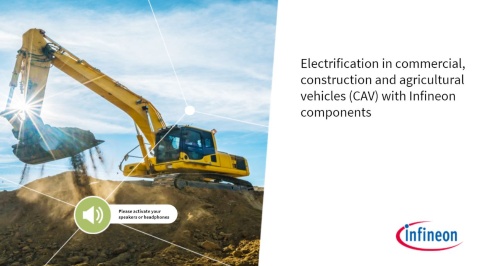
In this training, you will:
- to know about the market trend “Electrification” in commercial, construction, and agricultural vehicles (CAV)
- Understand the importance of customer enablement and how Infineon serves eCAV
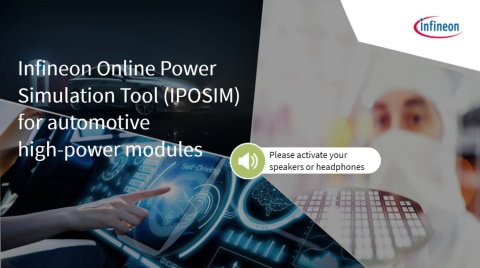
In this training you will:
- Get to know Infineon’s IPOSIM tool, specifically for an automotive electric vehicle inverter
- Discover the steps involved in simulating different parameters and comparing the results of different Infineon products to see which is the best fit for your application
Webinar
To fully exploit the potential of hydrogen, solutions must be found to the challenges of production, storage, transport and use. Learn how the different systems are structured and how they work together. Gain insights into different production and consumption applications and learn about Infineon's best-in-class semiconductor solutions.

